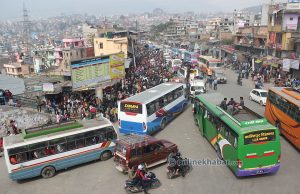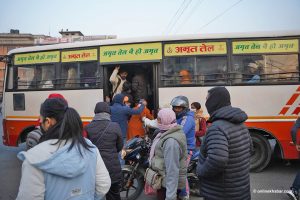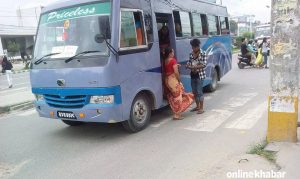
Public transport is considered the cheapest form of transportation in Nepal. However, Nepal’s public transport is full of issues. The main issue was and is the silent voice of survivors who are compelled to endure the pain of harassment. The widespread problems of sexual harassment in public transport often go unaddressed.
I surveyed 50 women recently who travel daily by bus. Through the research, I found that there is a need to understand sexual harassment, its root cause, pre, and post-psychological trauma to the survivor and measures that a survivor and state need to address and fill the gap by ensuring effective measures.
Sexual harassment in public transport
Sexual harassment in public transport takes place in various forms such as verbal comments or catcalling, unwanted touching or groping, staring or leering sexually, exposing or flashing genitals, and many more.
The conducted survey among survivors has indicated that instances of sexual harassment are not confined to any specific period. Rather, they occur unpredictably and without being constrained by a particular time frame.
Frequency of occurrence
People have different stories about harassment in public transport. Some respondents mentioned that they experience such incidents frequently, stating “many times” or “most of the time.” Others reported encountering such situations less often, with comments like “once” or “three or four times a week.”
However, not all respondents have personally experienced these incidents. Some have only heard about it happening to others, while others have witnessed it occurring to someone else. One person noted that it happens “often”. Additionally, some individuals expressed a sense of apprehension, feeling that it might happen to them, but could not clearly identify it. These diverse narratives underscore the different ways in which harassment on public transport impacts people.
Factors contributing to sexual harassment in public transport
The normalisation of sexual harassment is perpetuated by societal attitudes and gender stereotypes that undermine personal space boundaries. The survivors often wonder, “Where do I go to report?” When a person harasses a girl, she reacts, and in response, the harasser usually disembarks at the next station.
Unfortunately, very little is done about the incident. Even fellow passengers often respond with comments like, “Why are you shouting? Can you not see the bus is packed?” This highlights a distressing pattern of inaction and victim-blaming in such situations.
Another major factor contributing to instances of sexual harassment is the fear experienced by survivors.
According to their accounts, many survivors refrain from reporting incidents because they feel paralysed and unable to respond at the moment. Additionally, they have observed that fellow passengers tend to blame girls by citing the crowded nature of public transport, implying that physical contact is inevitable and beyond anyone’s control.
Consequences of inaction
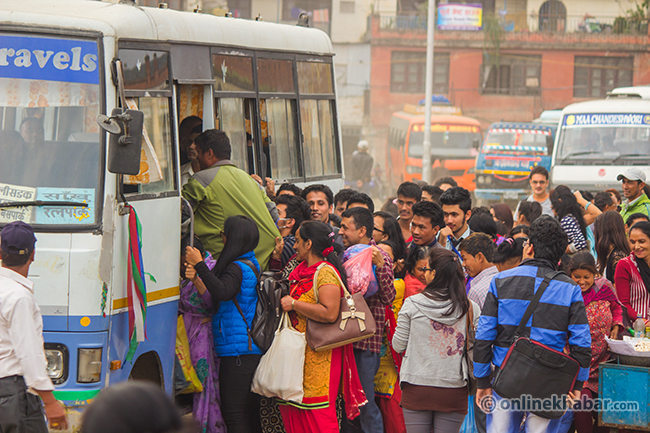
Sexual harassment has lasting effects beyond the immediate, impacting survivors emotionally, psychologically, and physically. It can lead to anxiety, depression, low self-esteem, and difficulties in forming relationships or progressing professionally. This also affects families, communities, and workplaces, eroding trust.
Pre trauma
The survivors have noted that before experiencing trauma, they frequently found themselves having to weigh their options carefully before using public transportation. This suggests a heightened sense of caution and apprehension surrounding their journeys.
They have also stated that they often,
- Fear while travelling in a public vehicle, especially alone.
- Makes them so insecure and less confident even when they are not in a public vehicle, less confident in life, and start overthinking.
- They feel hesitant to get into a packed bus. Even if anyone’s body part touches them, they tend to judge that person with the same perception however they can be good people too.
- It shakes their sense of safety. As some live alone in the valley by themselves, for a few days they could not gather the courage to come out of the house.
Such incident creates an adverse effect on the safety and well-being of the survivor. After the incident, fear is created and even if some man sees and talks with good intentions, the survivor will not feel safe anymore. Mental trauma creates doubt in every person.
Post-trauma
Sexual harassment survivors struggle to focus on daily tasks due to their lasting impact. They endure emotional distress, anxiety, panic disorders, post-traumatic stress disorder (PTSD) and reduced self-esteem.
Emotionally, fear, shame, and humiliation disrupt their stability. Persistent anxiety leads to panic attacks. PTSD brings intrusive thoughts and nightmares, hindering their sense of security. Their self-worth diminishes, affecting their confidence. Support is vital for survivors to regain well-being and agency.
Solutions and recommendations
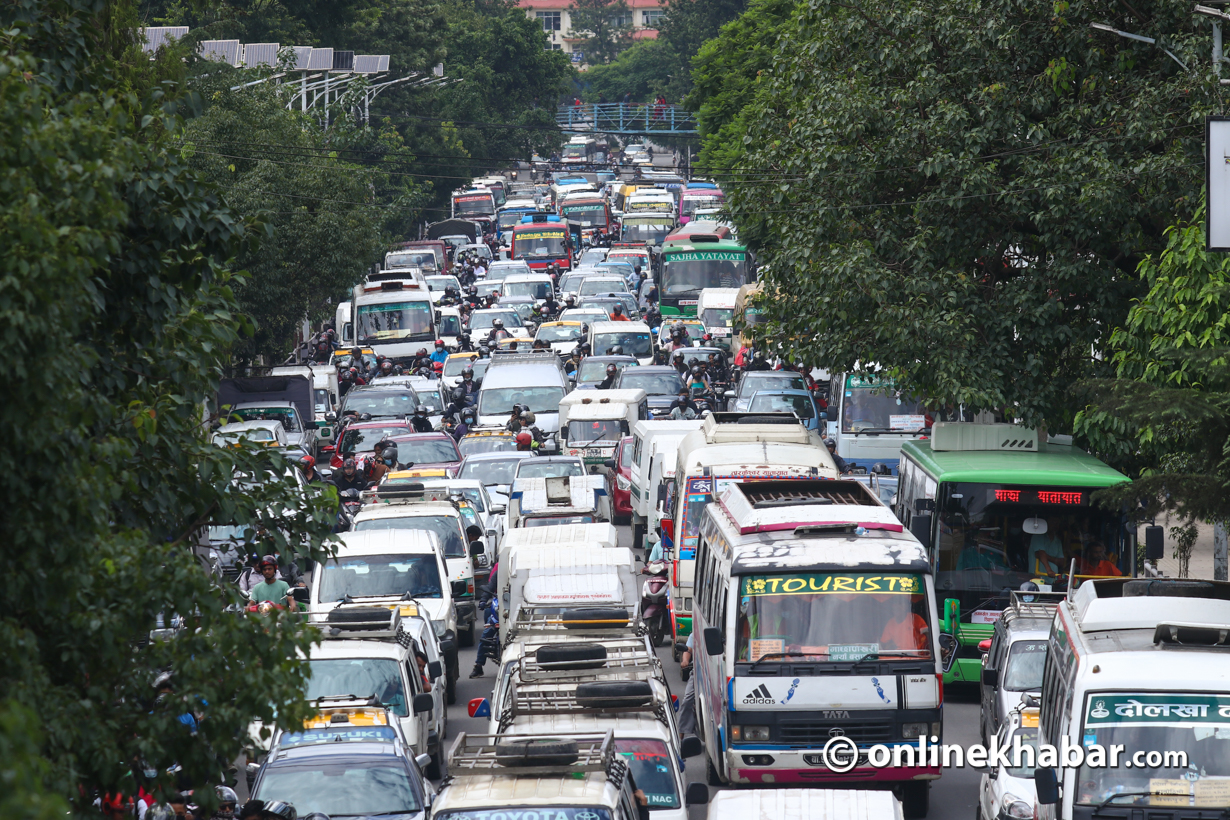
A critical step in addressing sexual harassment in public transport involves strengthening the legal measures and penalties associated with such acts.
Strengthening the consequences for individuals involved in harassment sends an unequivocal message that such behaviour is entirely unacceptable. This serves as a robust deterrent, underlining the imperative of respecting the rights and dignity of others.
This approach not only empowers survivors but also acts as a deterrent, discouraging potential harassers from committing such offences. Through improved legal frameworks and more stringent penalties, we can create a safer and more respectful public transportation environment for all passengers.
The survivors of sexual harassment in public transport have put forth several suggestions. One key recommendation is to actively listen to those who have experienced sexual harassment in public transport, as they can offer valuable insights and solutions.
They propose having larger vehicles to prevent overcrowding and more space. They also emphasise the need for awareness campaigns that educate people about appropriate behaviour on buses, as well as an accessible way to report issues.
Survivors suggest that staff should be trained to handle difficult situations. Additionally, they recommend having a helpline number for anyone in need of assistance. Another suggestion is to install CCTV cameras on buses, which could help monitor and prevent incidents. By incorporating these suggestions, we can create a public transportation system that prioritises safety and comfort for everyone.
In our society, buses and public vehicles are vital for transportation. We have learned that many people face a tough challenge; they experience such sexual harassment on buses, but they do not talk about it.
This needs to change. When we do not do anything about it, the problem gets worse. Survivors of harassment shared their ideas to help. They say we need bigger buses so there’s more space. They want everyone to learn about what’s right and wrong on buses and have an easy way to tell if something is wrong.





